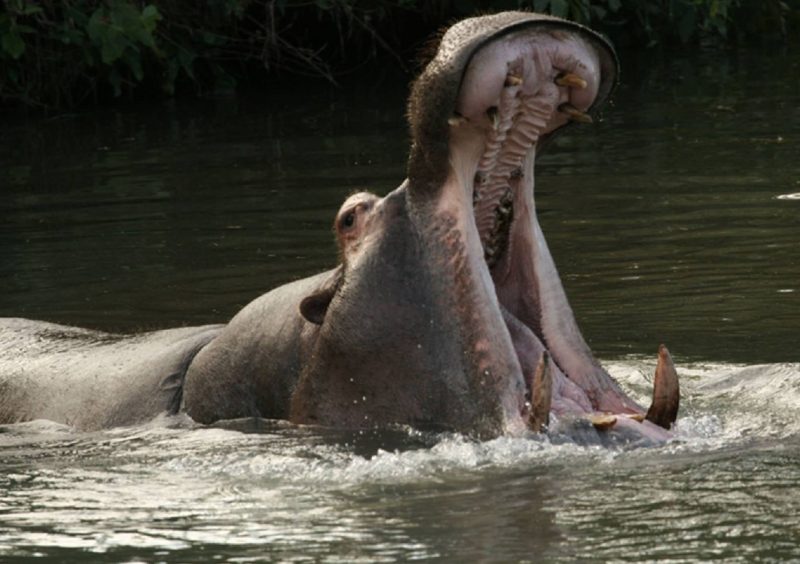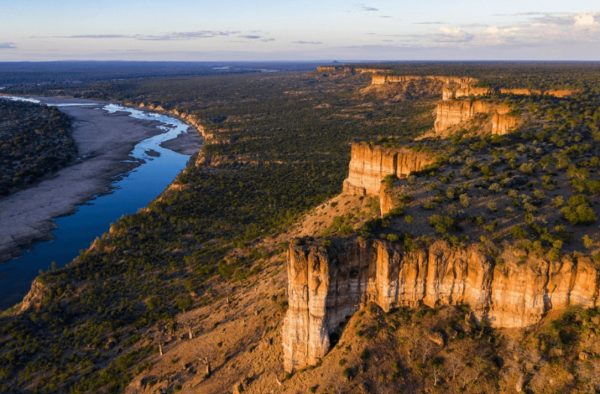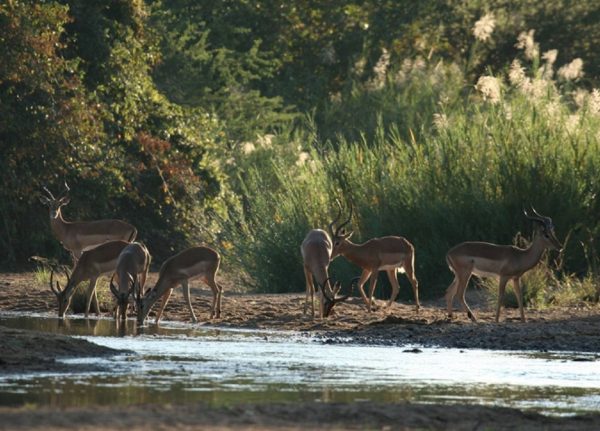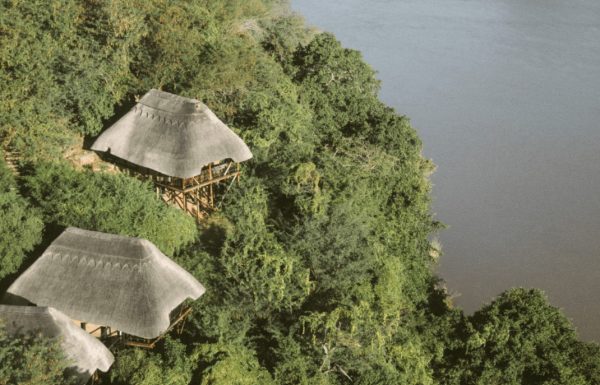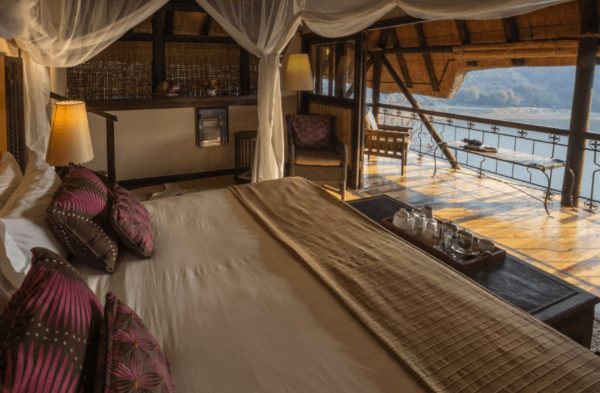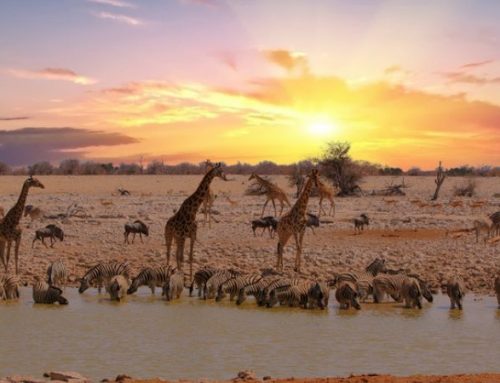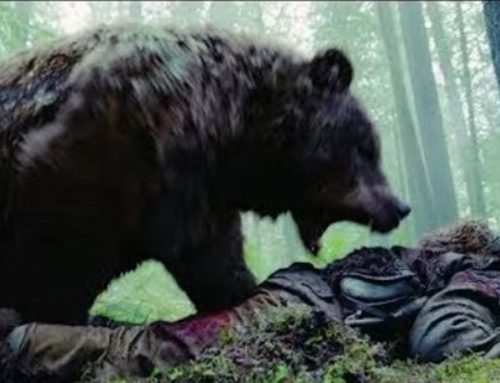The sun was just beginning to peek over the horizon, casting a golden glow across the vast expanse of the Save Valley in Zimbabwe.
This was the start of an adventure I had been eagerly anticipating for months—a hunting safari in one of Africa’s most renowned wildlife conservation areas.
The Save Valley Conservancy, sprawling over 3,200 square kilometers, is a haven for wildlife enthusiasts and hunters alike. It’s a place where the untamed beauty of Africa meets the thrill of the hunt, offering a unique blend of excitement and respect for nature. The conservancy is home to a diverse array of game, including the Big Five: lions, leopards, rhinos, elephants, and Cape buffalo, as well as numerous other species such as impalas, zebras, and kudu.
The First Day: Preparation and Anticipation
Our journey began at dawn. After a hearty breakfast, we gathered our gear and received a briefing from our experienced guide, Guy. He emphasized the importance of patience and respect for the wildlife, reminding us that we were here not just to hunt, but to immerse ourselves in the natural beauty of the Save Valley.
As we set out in our 4×4, the crisp morning air was filled with the sounds of chirping birds and the distant calls of animals. The landscape was breathtaking, with rolling plains, dense bush, and towering baobab trees.
The Hunt Begins: stalking the Impala
Our first target was the impala, a graceful antelope known for its agility and keen senses. Spotting a herd grazing in the distance, Guy signaled for us to approach quietly. We disembarked from the vehicle and began our stalk, moving slowly and deliberately through the bush.
The thrill of the hunt was palpable. My heart raced as we closed the distance, trying to remain unseen and unheard. Every step was calculated, our movements synchronized with the rhythm of the bush. The guide, Guy, a seasoned tracker with an almost supernatural ability to read the land, led the way. He signaled for us to crouch low, pointing out a fresh set of tracks and indicating the direction of the wind. We moved silently, the crunch of dry leaves underfoot muted by our careful steps.
The sun was climbing higher, casting long shadows that danced through the foliage. The air was thick with tension and the scent of earth and vegetation. We spotted the herd of impalas grazing peacefully in a clearing up ahead. Their tawny coats blended seamlessly with the surrounding grass, their ears twitching at the slightest sound.
We paused, using the natural cover of a thorn bush. I could hear my heartbeat pounding in my ears, the adrenaline coursing through my veins. Guy whispered instructions, his eyes never leaving the herd. “Patience,” he murmured, “We need to get closer but without alerting them. They are quick to sense danger.”
We resumed our slow, methodical approach, inching forward. The impalas were alert, their heads occasionally lifting to scan the surroundings. Every movement had to be perfectly timed, each step deliberate and soft. My breathing slowed, every sense heightened, as we gradually closed the gap.
Finally, after what felt like an eternity, we were within range. Guy raised his hand, signaling me to stop. I adjusted my stance, finding a stable position to take the shot. The impala I had targeted was slightly separated from the herd, its graceful neck lowered to graze. I could see the muscles in its body tense, ready to spring at the first hint of danger.
I took a deep breath, exhaled slowly, and steadied my rifle. My finger rested lightly on the trigger, my eye lined up with the sight. The world seemed to narrow down to that single point of focus—the impala’s shoulder. Time slowed, and in that suspended moment, there was only clarity and purpose.
With a gentle squeeze, the rifle fired. The sound echoed through the clearing, and the impala fell instantly, a clean and precise shot. The herd bolted, a blur of movement disappearing into the bush, but my target lay still. The rush of adrenaline was replaced by a profound sense of accomplishment and respect for the life taken.
Guy nodded approvingly, his eyes reflecting a blend of pride and satisfaction. “Well done,” he said quietly. We approached the downed impala, and I was struck by its beauty and grace even in death. Guy knelt beside it, offering a brief moment of silence—a hunter’s tribute to the quarry and a reminder of the delicate balance between life and survival in the wild.
The hunt had been more than a test of skill; it was a dance with nature, requiring patience, precision, and respect. Each element, from the careful approach to the decisive shot, had woven together to create an unforgettable experience. As we prepared to transport the impala back to camp, I felt a deep connection to the land and the timeless tradition of the hunt, a tradition that honored both the hunter and the hunted.
The Challenge of the Buffalo
The next day, we set our sights on a more formidable challenge: the Cape buffalo. Known as “the Black Death” due to its unpredictable nature and sheer strength, hunting a buffalo is no small feat. After hours of tracking, we spotted a lone bull grazing near a waterhole.
This hunt required not just skill, but also nerves of steel. The buffalo noticed us as we approached, its massive head swinging in our
direction. With Guy’s guidance, we moved slowly and carefully, keeping the wind in our favor to mask our scent. The tension was electric as we closed in, knowing that any misstep could provoke a charge.
At about 50 yards, Guy whispered for me to take the shot. The Cape buffalo, a formidable and intimidating presence, stood partially obscured by the thick bush. Its eyes were alert, its muscles tense and ready to spring into action at the first hint of danger. My heart pounded in my chest, each beat resonating with the gravity of the moment.
I steadied my rifle, feeling the weight of both the weapon and the responsibility it carried. Guy’s presence beside me was reassuring, his experience and calm demeanor a steadying force. I took a deep breath, allowing the air to fill my lungs and then slowly exhaled, clearing my mind of everything but the task at hand.
The buffalo’s vital zone was my target, a small but crucial area that would ensure a quick and humane end. My finger rested gently on the trigger, and I felt a surge of adrenaline. The world around me seemed to fade, leaving only the buffalo and the sight of my rifle.
I fired. The sound of the shot echoed through the bush, startling birds into flight. The buffalo reacted instantly, its powerful body lurching forward as it took off into the dense underbrush. Despite the precision of my shot, the buffalo’s immense resilience and sheer will to survive propelled it into a desperate flight.
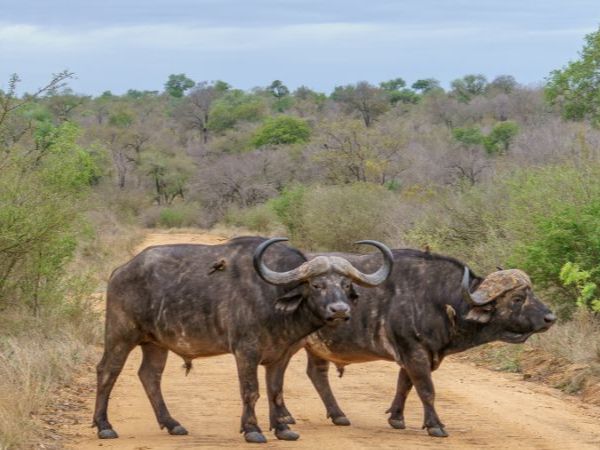
Two examples of old “Dagga Boys”
We watched as it disappeared into the foliage, the silence that followed filled with the rapid thumping of our hearts. Guy nodded approvingly, his eyes sharp and focused. “Good shot,” he said, “but we need to track it now. Stay alert and maintain distance.”
We set off, following the trail of disturbed vegetation and the occasional drop of blood. The dense bush was a labyrinth, the undergrowth thick and the ground uneven. Every step was cautious, our senses on high alert for any sign of the buffalo or other potential dangers lurking in the wild.
Tracking the wounded buffalo was both an art and a science. Guy led the way, his keen eyes and years of experience guiding us through the maze of the bush. He pointed out subtle signs—a broken branch here, a scuff mark there—that indicated the buffalo’s path.
The chase was intense, an hour that felt both fleeting and eternal. The African sun climbed higher, casting dappled shadows on the ground. The air was thick with the scent of earth and vegetation, mingling with the adrenaline-fueled tension that gripped us.
We moved quietly, speaking in hushed tones, aware that the buffalo could turn on us at any moment. Guy’s instructions were clear and precise, his knowledge of buffalo behavior a critical asset. We paused frequently, listening for the rustle of leaves or the distant snort of the wounded animal.
Finally, we found it. The buffalo lay in a clearing, its massive body still and its eyes half-closed. It had succumbed to its wounds, the strength and endurance that had carried it through the initial flight now exhausted. As we approached, I felt a rush of respect and admiration for this powerful creature.
Standing over the downed buffalo, I was struck by its sheer size and the raw power it embodied. The hunt had been a testament to the animal’s resilience and the skill required to track and take down such a formidable opponent. Guy and I stood in silence for a moment, acknowledging the life of the buffalo and the role it played in the circle of life.
The hunt for the Cape buffalo had been more than just a pursuit; it was a profound experience that tested my skills, patience, and respect for nature. The dynamic of the hunt—from the careful preparation and the intense tracking to the final moment of respect—had created a deep connection with the wild.
As we prepared to transport the buffalo back to camp, I felt a profound sense of accomplishment and humility. The Save Valley Conservancy had provided not only the thrill of the hunt but also a deep appreciation for the complex dynamics of the natural world and the delicate balance between life and survival.
In the end, the hunt was a reminder of the respect and responsibility that come with being a part of nature’s intricate web. It was an experience that would stay with me forever, a testament to the power and majesty of the African wilderness.
The Evening Campfire
Each evening, we gathered around the campfire, sharing stories of the day’s adventures. The sky was a canopy of stars, and the sounds of the African night surrounded us—crickets chirping, distant lion roars, and the occasional rustle of nocturnal animals. These moments of camaraderie and reflection were as memorable as the hunts themselves, fostering a deep connection with both the land and my fellow hunters.
Encounter with a Leopard
On our final day, we embarked on what would become the most thrilling part of our safari: the pursuit of a leopard. Leopards are elusive and cunning, masters of stealth and surprise. We set up a blind near a known leopard territory and waited, using bait to attract this apex predator.
Hours passed with no sign of the elusive cat. Just as we were beginning to lose hope, Guy signaled us to be still. Out of the shadows, the leopard appeared, moving with the fluid grace of a phantom. My heart pounded as I raised my rifle, careful to respect the magnificent creature before me. With Guy’s whispered encouragement, I took the shot. The leopard dropped instantly, a bittersweet triumph that left me in awe of nature’s balance.
Reflection and Departure
As our safari came to an end, I felt a profound sense of fulfillment. The Save Valley had given me not just the thrill of the hunt, but a deeper appreciation for the intricate web of life in the African wilderness. The expertise and passion of our guide, Guy, had enriched our experience, turning each hunt into a lesson in patience, respect, and conservation.
We left the Save Valley with unforgettable memories and a renewed commitment to preserving these wild places for future generations. The spirit of the African bush now held a permanent place in my heart, a reminder of the raw beauty and timeless challenge that only a true safari can offer.
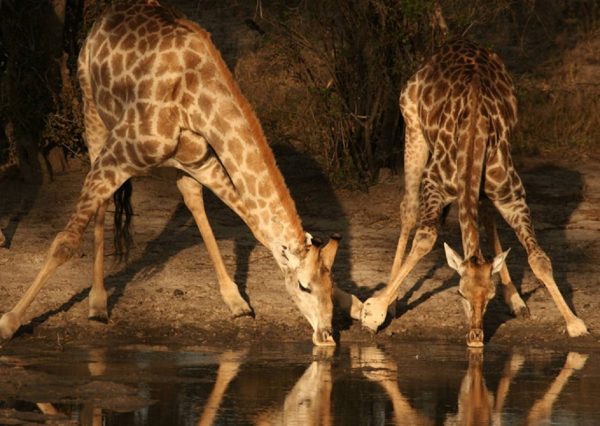
Thirsty giraffes at the Savè river, Zimbabwe
Final Thoughts
If you ever have the chance to embark on a hunting safari in the Save Valley, seize it. It’s more than a hunt; it’s an adventure that connects you with nature in a profound and lasting way. Until next time, may the wild winds guide your path and the spirit of the hunt inspire your soul.
The Save Valley Conservancy: A Hunter’s Perspective
Dawn in the Wilderness
The first light of dawn breaks over the Save Valley Conservancy, casting a golden hue across the landscape. As a hunter, the sight is nothing short of breathtaking. The sprawling conservancy, covering over 3,200 square kilometers, is a mosaic of diverse terrains—from open savannahs and dense woodlands to rugged hills and meandering rivers. Each area teems with life, promising the thrill of the hunt and the serenity of untouched nature.
The Thrill of the Hunt
The Save Valley is renowned for its rich biodiversity, making it a hunter’s paradise. The anticipation builds as you step out of your 4×4, the cool morning air filled with the scent of wild grass and distant waterholes. Your guide, an expert in tracking and wildlife behavior, points out fresh tracks—evidence of a recent visit by a herd of impalas or perhaps the elusive leopard.
As you move through the bush, the landscape reveals its secrets. Herds of elephants trundle in the distance, their massive forms creating a surreal backdrop. The sight of a majestic sable antelope, its horns arching like elegant scythes, quickens your pulse. Every rustle in the underbrush, every distant call, heightens your senses, drawing you deeper into the wild.
The Encounter
The Save Valley is not just about the pursuit; it’s about the encounter. Imagine tracking a Cape buffalo, known as “the Black Death” for its unpredictability and sheer power. You find yourself in a tense standoff, the buffalo’s eyes locking onto yours, each of you sizing up the other. It’s a moment of raw connection with one of Africa’s most formidable creatures.
Then there are the leopards, ghosts of the night. The challenge of setting up a blind and waiting in silence, knowing that any moment could bring the sight of this stealthy predator, is an experience that tests your patience and your skill. When the moment finally comes, and you see the leopard emerge from the shadows, it’s a sight that etches itself into your memory forever.
The Landscape
The landscape of Save Valley Conservancy is as varied as it is vast. Open plains stretch out under the expansive sky, perfect for spotting game from a distance. Dense thickets provide cover for both predator and prey, creating a dynamic environment where every step must be taken with care. The rivers and waterholes are lifelines, attracting a multitude of species and offering prime spots for observing wildlife in their natural routines.
Conservation and Respect
As a hunter in Save Valley, you quickly learn that this place is not just about the hunt; it’s about conservation and respect for nature. The conservancy is dedicated to preserving its wildlife, and hunting here is managed with strict regulations to ensure sustainability. Every shot taken is a part of a larger narrative of wildlife management and ecological balance.
Your guide shares stories of the efforts to protect endangered species, such as the black rhino, and the ongoing battles against poaching. This knowledge deepens your appreciation for the privilege of hunting in such a well-preserved wilderness.
Evening Reflections
Evenings in the Save Valley are a time for reflection. Around the campfire, with the sky ablaze with stars, you share stories with fellow hunters, reliving the day’s adventures. The sounds of the African night—a lion’s roar in the distance, the chorus of frogs and insects—create an atmosphere that is both peaceful and thrilling.
A Hunter’s Legacy
Hunting in the Save Valley Conservancy is more than a sport; it’s an immersion into the heart of Africa’s wild. It’s about understanding the delicate balance of ecosystems and playing a part in the conservation of this incredible landscape. As you leave, you carry with you not just trophies, but a profound respect for the natural world and a commitment to its preservation.
The Save Valley Conservancy, seen through the eyes of a hunter, is a place where adventure and conservation meet, offering an experience that is as enriching as it is exhilarating.

